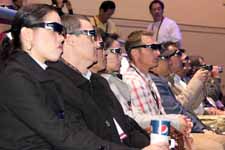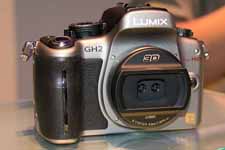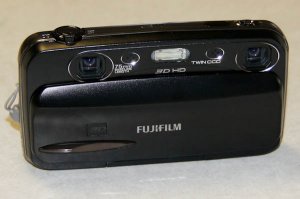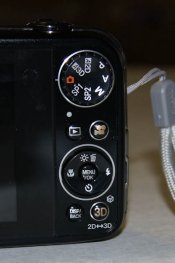Online Magazine
Recent Posts
- Safeguard your Cellphone Photos
- Black & White to Color – Instantly
- Wearing Many Hats
- Video Roundup
- Rescuing Your Blurry Pictures
- Showing Their Age
- What is Your Angle?
- Panorama Photos
- Humorous Photos
- Close Ups
- Fisheye Pictures
- Photo Antiquities
- Printing Big
- Appreciating Scale
- Celebrity Sightings
Tags
More Places to Go
- Free "How-To" Books “How To” books for popular cameras 0
- Vist Us on Facebook keep in touch with us on Facebook 2
Archives
- July 2023 (1)
- March 2023 (2)
- February 2023 (1)
- December 2022 (1)
- October 2022 (1)
- September 2022 (8)
- August 2022 (9)
- July 2022 (1)
- June 2022 (1)
- June 2021 (1)
- May 2021 (1)
- March 2021 (5)
- February 2021 (4)
- January 2021 (2)
- April 2019 (1)
- March 2019 (1)
- February 2019 (1)
- October 2018 (2)
- April 2018 (1)
- March 2018 (4)
- February 2018 (1)
- November 2017 (1)
- August 2017 (1)
- June 2017 (1)
- April 2017 (1)
- March 2017 (5)
- February 2017 (2)
- January 2017 (1)
- October 2016 (1)
- September 2016 (1)
- August 2016 (1)
- July 2016 (1)
- May 2016 (1)
- April 2016 (1)
- March 2016 (2)
- February 2016 (1)
- January 2016 (2)
- December 2015 (1)
- November 2015 (1)
- October 2015 (3)
- April 2015 (1)
- March 2015 (5)
- February 2015 (1)
- January 2015 (4)
- December 2014 (2)
- November 2014 (5)
- October 2014 (2)
- September 2014 (1)
- August 2014 (2)
- July 2014 (1)
- May 2014 (1)
- April 2014 (5)
- March 2014 (5)
- December 2013 (2)
- November 2013 (18)
- October 2013 (1)
- September 2013 (1)
- August 2013 (1)
- July 2013 (1)
- June 2013 (3)
- May 2013 (1)
- April 2013 (2)
- March 2013 (1)
- February 2013 (1)
- January 2013 (1)
- December 2012 (1)
- November 2012 (2)
- October 2012 (2)
- September 2012 (5)
- August 2012 (2)
- July 2012 (1)
- June 2012 (1)
- May 2012 (1)
- April 2012 (4)
- March 2012 (1)
- February 2012 (1)
- January 2012 (3)
- December 2011 (1)
- November 2011 (3)
- October 2011 (1)
- September 2011 (2)
- August 2011 (2)
- June 2011 (3)
- May 2011 (4)
- April 2011 (8)
- March 2011 (8)
- February 2011 (10)
- January 2011 (6)
- December 2010 (11)
- November 2010 (14)
- October 2010 (6)
- September 2010 (12)
- August 2010 (2)
- July 2010 (4)
- June 2010 (3)
- May 2010 (1)
- April 2010 (1)
- March 2010 (2)
- February 2010 (1)
- January 2010 (1)
- December 2009 (1)
- November 2009 (2)
- October 2009 (2)
- September 2009 (1)
- August 2009 (3)
- July 2009 (2)
- June 2009 (1)
- May 2009 (2)
- April 2009 (1)
- March 2009 (2)
- February 2009 (1)
- January 2009 (3)
Seen at WPPI – Instax instant cameras
07th March 2017
Instant Photography – prints while you shoot
|
|
|
| At the Wedding and Portrait Photography International Conference & Expo held earlier in February, I couldn’t help but notice several attractive displays at the huge Fujifilm booth. | |
|
|
|
| Fujifilm has been producing instant photo cameras since before the turn of the century (2000) as a successor to the groundbreaking Polaroid line.
Their most popular model is the Instax 70 Mini which comes in six vivid colors – white, yellow, blue, gold, red and black. All of these cameras feature auto focus, auto exposure, self-timer, fill flash and tripod socket. They also have a convenient “selfie” mode. Fujifilm’s line of instant photograph cameras are an attractive addition for enhancing wedding, reunion, or party events. Make the rounds among the guests with one of these cameras and there’s an exciting picture for them to see. |
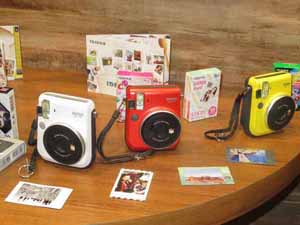 |
|
|
|

Instax Mini film is packaged in sets to produce 10 – 62mm x 46mm photos – about the size of a credit card. In addition to photographs with white borders, the packages of film can be purchased with these designs and colors: black, sky blue, rainbow, candy pop, stained glass, shiny star, comic, air mail, stripe, and Hello Kitty. There is also a monochrome film package for producing black and white photos. |

Here’s a photo of me taken with a colorful border. It takes about 90 seconds from pressing the shutter release until the photograph is fully “developed”. |
|
Here’s a couple of wedding displays that were created from Instax cameras. |
|
 |
 |
|
|
|
| The suggested price of Instax 70 Mini is $110. The Instax Mini Film sells for about $15 for 2 x 10-exposure packages.
There is also an Instax Wide 300 model camera which can take instant photos that are double wide: 62mm x 92mm. For more information about the Instax line of cameras, please visit Fujifilm. |
|
|
|
|
Written by: Arnie Lee
3D Photography – the next big thing?
02nd April 2011
A Look at the Panasonic Real 3D W3 camera
I’ll have to admit that I wasn’t particularly interested in 3D photography and video until I took a walk through the aisles of CES this past January.
Among the major television makers LG, Panasonic, Samsung, Sharp and Sony all had huge displays demonstrating some very impressive 3D capabilities.
From the fanfare that they were lavishing on their new equipment, it appears that the major electronics manufacturers are counting on 3D to be a big part of their revenue in the next few years.
I purchased the Real 3D W3 in February at a cost of just slightly over $300. For more information about the W3 visit Fujifilm.
For more information about the 3D stereo lens set contact Panasonic.
For more information about the 3D Sweep Panorama feature contact Sony.
Please note that Stay Focused has no connection to Fujifilm.
Written by Arnie Lee
